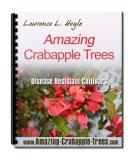Know What To Look For When Buying Rural Property
Country living is increasingly popular but rural property buyers must be cautious.
With food and energy prices soaring and population centers exploding; many people who possess a pioneering spirit are exploring outlying rural areas so they can create a new homestead. Many intrepid individuals are buying land to hold for now, and gradually planning to build on it and move there at some later point in their lives.
However, unlike buying a generic house in a typical subdivision, country living involves analyzing various factors before one even plants the first stakes and tomato plants in the ground. With urban properties you there's no urgent need to concern yourself with water rights, boundary lines, property access, utilities, or hard-up bulls. When looking at rural properties there are vital areas that should be considered before making that purchase. Some important factors to consider are:
Climate:
We often take climate for granted when living in an urban area as it involves little more than looking out the window to see whether short sleeves or umbrellas are in order. Is it hot, cold, wet or dry?
In the country it can be a different experience. Sure, the sun glistening off the morning dew can take on a whole new meaning, but so does a torrential downpour of rain that makes the road to your home impassable or transforms your lovely green meadow into a big brown mud pit.
If the area is prone to freezing temperatures, then clearing a long dirt road of three foot snow drifts is a dilemma that needs to be considered.
Forces of nature can also affect the property values and insurance rates. You’ll also want to consider variations in temperature, humidity, rain, hail, snow, drought, floods, lightning, dust storms, tornadoes, and hurricanes. It pays to be aware of how the area is affected by all four of the seasons.
Water:
Without access to water, even the most beautiful land is a non-starter. If the property does not have access to a sufficient water supply, then it may render the property nearly worthless. After all, just one person can use 50-100 gallons per day, and a robust vegetable garden might use nearly as much.
In rural areas the expense and effort can go much farther than the simple turn of a faucet tap. Simply getting running water can require a generator, pump, pipeline, holding tank, and a well.
You may be informed that everyone has wells in the area but that is no guarantee you’ll find underground water. And drilling wells can be a hit or miss proposition, with large costs involved, only to end up either not finding water, or that it’s been contaminated by pesticides.
Finally, don’t be misled by rushing rivers and surging streams when exploring properties in the spring and early summer, as this is likely the peak flow rate for the year.
Land:
When looking at a site for building your country house you must determine soil conditions, drainage patterns, slopes. For example, surface soils that expand and contract during freezing temperatures or do not drain properly can devastate the house’s foundation.
Of course soil conditions will also impact your gardening or farming plans. Areas with lots of wild vegetation can indicate good top soil conditions. On the other hand, soil that is parched and light in color and the roots of trees and bushes have been exposed indicate that your topsoil is eroding.
Access:
It’s important to know your rights with regards to access to the property. In certain cases, you may need to gain entry to your property by using an easement or right-of-way. This gives you the right to travel across property owned by another person. Use of this entry way could require negotiations and legal papers, so it’s essential to know about this before committing to a property.
Another factor to consider with property access is emergency response times. Larger emergency-response vehicles such as a fire truck may not be capable of traversing over small or poorly maintained roads or an ambulance may not readily find a poorly marked parcel.
Boundary Lines:
In order to minimize boundary line disputes, most states have implemented laws that state you must have a fence to keep roaming animals off your property.
If you do not have an appropriate fence installed per local regulations, and the neighbor's big burly bull wanders onto your property and tramples your tomatoes and dents your Dodge, you’ll have no legal recourse. Most rural property fanciers never conceive of this until after the fact.
In order to avoid litigation, you must perform the legal research to stay abreast of property statutes.
Zoning:
Many states have zoning laws which mandate that rural landowners accept all the activities and operations of neighboring farmers and ranchers, including smelly cow manure and dream-ruining roosters. Urban-escaping property owners must accept these disturbances as long as they are operating within the constraints of the law.
Have A Great Story About This Topic?
Do you have a great story about this? Share it!
Order Your New Landscape Design Today!
Always Design Before You Plant!
Click The Above Link To Get Your Dream Design Started Now!

Privacy Disclaimer About Contact This Site Built: Site Build It
Copyright © 2003 - 2023 by Web-Landscape-Design-Ideas.com.
All rights reserved.


